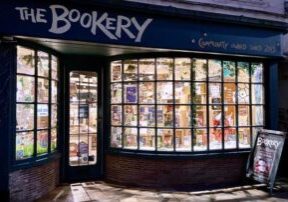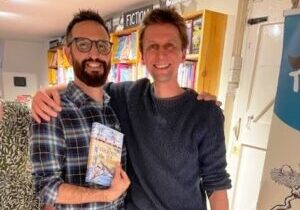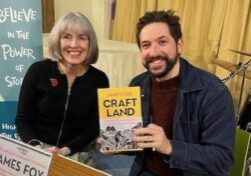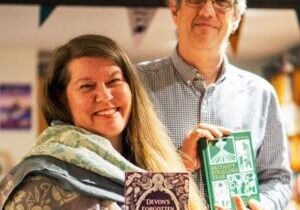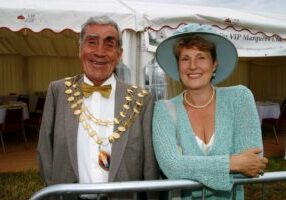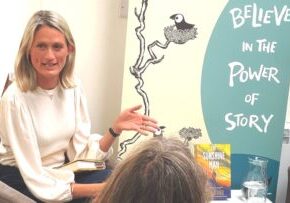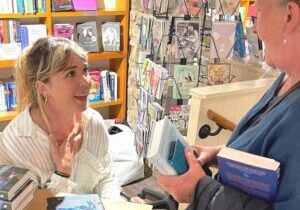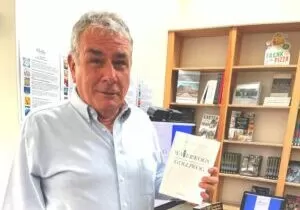FEATURES
History That Hurts with Todd Gray
June 3, 2025 | Blog > Features > History That Hurts with Todd Gray
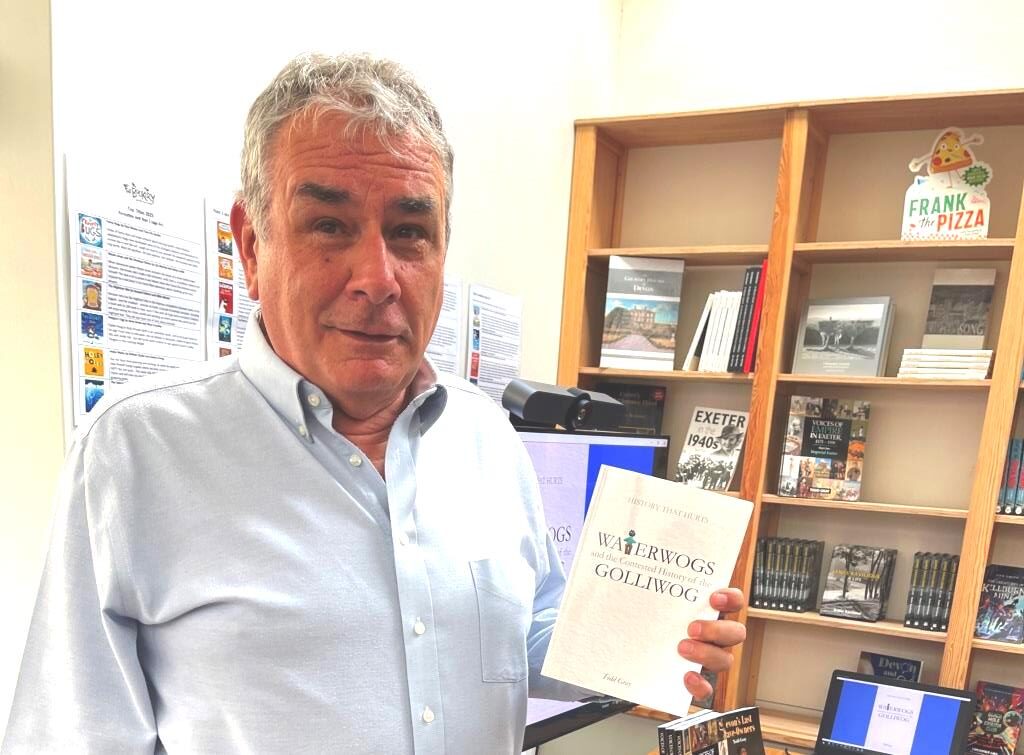
As our winter/spring Afternoon Author series drew to a close, we were privileged to welcome Dr Todd Gray MBE to The Bookery for a thought-provoking session on Writing Challenging History in Devon. Known for his meticulous research and dedication—working twelve-hour days, six days a week—Dr Gray has published over fifty books that explore lesser-known aspects of Devon’s history.
Guests were settled with tea and biscuits before Dr Gray provided a trigger warning, acknowledging that some of his material would be both controversial and unsettling. His work delves into complex historical topics, including among many other subjects, enslavement, the rise of fascism in the 1930s, and looting during the Second World War. For this afternoon’s event, he investigated a particularly divisive figure: the Golliwog and its association with the Waterhogs in Devon—a subject fraught with contradictory viewpoints and deep societal implications.
 Dr Gray posed compelling questions: Why study history? What aspects of history do we choose to accept? He encouraged an open discussion on how difficult truths can challenge our understanding. His latest book, Waterwogs and the Contested History of the Golliwog, is perhaps his most controversial. Todd took us through the evolution of the Golliwog character has been shaped by cultural, social, and historical factors over time. Originally created by Florence Kate Upton in her 1895 children’s book The Adventures of Two Dutch Dolls and a Golliwogg, the character was initially depicted as a friendly and adventurous figure. Throughout the 20th century, the character appeared in various forms, including toys, literature, and branding. The early images of the golliwog were of a fairyland character morphing into a minstrel, and it was this image that the famous Robertsons jams/marmalade company captured as its symbol from 1910 and for many years perpetuating the golliwog. Todd reminded us of 10 Little Golliwogs by Enid Blyton in the 1930’s and Ten Little N****** by Agatha Christie and that Marlene Dietrich took her golliwog to Hollywood in the 1930’s. He went onto explain that it was only from the Empire Windrush arrival in the UK in 1949 and the years that followed that the West Indian population became uncomfortable to see images of the Golliwog and found them insulting and the racist connotations developed. Todd contented that prior to the early 1950’s there was no association of the Golliwog being a racist symbol/character.
Dr Gray posed compelling questions: Why study history? What aspects of history do we choose to accept? He encouraged an open discussion on how difficult truths can challenge our understanding. His latest book, Waterwogs and the Contested History of the Golliwog, is perhaps his most controversial. Todd took us through the evolution of the Golliwog character has been shaped by cultural, social, and historical factors over time. Originally created by Florence Kate Upton in her 1895 children’s book The Adventures of Two Dutch Dolls and a Golliwogg, the character was initially depicted as a friendly and adventurous figure. Throughout the 20th century, the character appeared in various forms, including toys, literature, and branding. The early images of the golliwog were of a fairyland character morphing into a minstrel, and it was this image that the famous Robertsons jams/marmalade company captured as its symbol from 1910 and for many years perpetuating the golliwog. Todd reminded us of 10 Little Golliwogs by Enid Blyton in the 1930’s and Ten Little N****** by Agatha Christie and that Marlene Dietrich took her golliwog to Hollywood in the 1930’s. He went onto explain that it was only from the Empire Windrush arrival in the UK in 1949 and the years that followed that the West Indian population became uncomfortable to see images of the Golliwog and found them insulting and the racist connotations developed. Todd contented that prior to the early 1950’s there was no association of the Golliwog being a racist symbol/character.
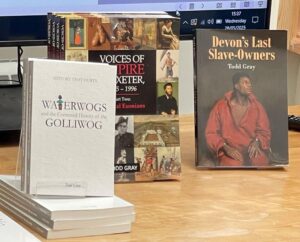 The afternoon sparked a lively and insightful discussion, with audience members sharing their personal reflections on the topic. Dr Gray engaged with attendees, answering questions and signing books, making for a stimulating end to our season.
The afternoon sparked a lively and insightful discussion, with audience members sharing their personal reflections on the topic. Dr Gray engaged with attendees, answering questions and signing books, making for a stimulating end to our season.
We extend our gratitude to everyone who has joined us for our Afternoon Author events over the past five months. We look forward to welcoming you back in the autumn for another series of literary conversations at The Bookery!
June 3, 2025
Blog > Features > History That Hurts with Todd Gray

